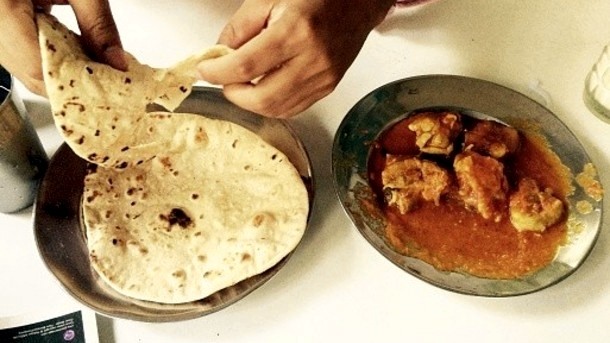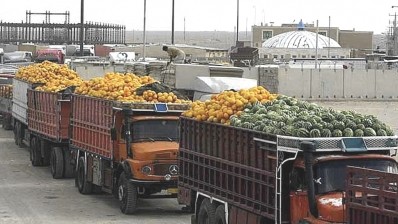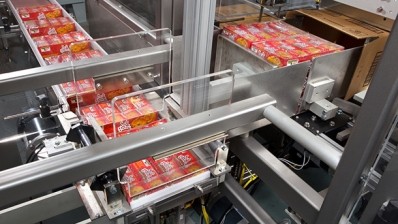India
Traditional tastes can help food processing boom beyond snacks

For the most part, Indians eat packaged foods, such as noodles and chocolates, as snacks or indulgences. Products in this segment are particularly focused on children, even though a number of manufacturers have attempted to change such thinking over the years to increase their appeal.
If one were to assess which foods were eaten by average Indians, on a typical day and across all sections of society, the likelihood would be that most were trusted local standards. Even now, more than three decades after ramen-type noodles first arrived in India, non-Indian foods are still seen as a novelty—and a hard sell.
Conversely, in the west, processed foods are usually “staples” and “centre-of-plate” items that have been adapted over time to industrial-scale processing.
While they have been available for many years in India, and are stocked on shelves across the country, western-style processed foods have been losing space in recent times. White bread, relative to fresh Indian roti, is a good example of this phenomenon.
It makes sense, then, that the industrial-scale processing of traditional Indian foods has largely been restricted to snacks. Given the nation’s conservative eating culture, it was never going to be easy to sell a packaged idli or biryani when these have been prepared in homes daily and for generations, but snacks are slightly different. They are traditionally purchased from vendors, often in a packaged format for children. As a result, snacks became an attractive starting-point for the burgeoning processed traditional food segment.
Processed Indian traditional foods were originally produced in India almost exclusively for expatriate Indians living in Anglo-Saxon countries. In fact, Britain was until recently the world’s biggest PITF producer.
Using this export success as a platform, these products then launched in India. During this last decade of Indian economic growth, this product sector has increased significantly too. But now that growth appears to be here to stay, one cannot simply presume that packaged foods will also rise at the same pace as the wider economy. This will take some effort by the industry.
When our F1rst analysts began developing the PITF theme, we studied the potential for ingredients, technologies and packaging solutions up to 2020 for this group of products.
With this in mind, we conducted the first of what we anticipate will be a regular series of conferences on PITF in Delhi last September. We also run a PhD programme sponsored by Nestlé Research and TATA Trusts that promotes research into processed traditional foods at university laboratories. DuPont has confirmed that it will be part of the sponsor consortium for the second year.
We believe that to sustain growth in traditional Indian food processing, companies must have an active understanding of market requirements, and begin by reaching out for the low-hanging fruit. They must also integrate health and wellness right at the conceptual stage of product development.
Market requirements, in our opinion, simply echo what the population is familiar with and has emotionally invested in. Traditional foods fit this bill perfectly, thereby fulfilling the Industry’s volume/value growth requirement.
Regional and small companies introduced the concept, but they could not be recognised as an organised sector until recently.
What stands out to me is that Indian food can be technically complex to recreate in an industrial situation.
Due to the complexity of individual cuisines and the technology required to make them, large companies were forced until recently to formulate products that would be accepted across the whole country while ignoring regional variations—a one-size-fits-all approach that is prone to missing some unique matrices.
Creating a PITF product requires much more than merely scaling up a kitchen process. At our Delhi conference last September, we laid the foundation for enhancing discussion and action around this theme. You can access the conference factbook here.
A single snack is a combination of many different temperatures, textures and flavours. Combining these into a packaged product that involves some amount of home preparation seems the way forward. Moreover, innovative combinations of techniques, ingredients, packaging and positioning are also required to recreate traditional foods.
So does development in this regard pre-empt “on-the-go” products for the large number of Indian foods that can potentially be produced on an industrial scale?
Cuisines may vary every couple of hundred kilometres in India, though there are common items across regions. Typically a south Indian sambar, or lentil broth, does not taste the same across the five states that comprise South India. Which taste, then, should one choose to be mass-produced? Is there enough volume justification to have local flavour variants for the same product in each state? These questions simply accept the fact that one size does not fit all in India.
That consumers have an immediate point of reference adds another dimension to the creation of flavours or textures in processed traditional food. They will want to know if a processed food is the same as—or better than—what is made at home or bought at the friendly local restaurant.
Matching this emotional connect is an enormous challenge. The predominance of the informal sector in the Indian food scene also adds to the difficulty of creating a processed traditional food.
Adding to all this complexity are multiple dietary restrictions. “Vegetarian”, denoted by a mandatory green dot on the label, restricts the use of many ingredients for India’s massive non-meat-eating population.
Around 30% of Indians are purely vegetarian, while the remainder eat meat very selectively. Existing ingredient toolkits are ill-equipped to address this challenge, and so restrict the diversity of products that can be introduced.
One vegetable protein that comes to mind is “mock meat” or “texturised vegetable protein” (TVP), which straddles the India’s taste/texture conundrum.
When TVP was first introduced in India, and I was still a child, it was positioned as a meat alternative, but it was hard to work out who it was meant for.
The vegetarian population had no need for it: they simply didn’t even want a meat-like product. Rich meat-eaters could afford animal protein, and so had no requirement for an alternative, and the poor, for whom it could have provided excellent dietary protein, could simply not afford it. It was destined to fail.
But times change and recently there has been a resurgence of this ingredient, which is now also found in retail packs and also sold loose in supermarkets. It is positioned as a healthy protein addition to the diet, and is available as nuggets for preparation at home.
A significant market also exists where it is used as an additive/extender in meat-based biryanis in the unorganised foodservice sector.
That means it is now seen as a healthy protein alternative, with no connotation to meat whatsoever. It is on the way to becoming a successful ingredient, even on retail shelves. The soy notes have significantly reduced and it adapts itself very well to spicy dishes.
Though things are moving quickly, the food industry cannot afford 30 years or more to make a success of each of its ingredients and finished products. Instead, what we are seeing now is products that stop just short of being ready-to-eat, presenting themselves as single ingredients, masala mixes and ready-to-cook mixes. Even semi-cooked and ready-to-cook formats still have a long way to go in this burgeoning traditional processed food segment.
- Kaushik Shankar holds a PhD in food technology, and directs global research at Switzerland-based business consultant Giract, and F1rst, Giract’s Indian associate. His interest lies in processed Indian traditional food evangelism. He can be reached at xnhfuvx@tvenpg.pbz.


















